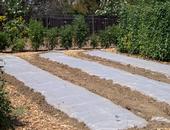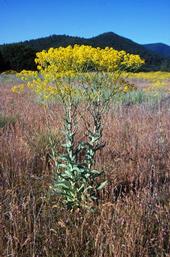
Soil solarization is a method home gardeners and farmers can use to manage soilborne pests such as weeds, disease pathogens, nematodes and insects. Solarization can reduce help reduce pesticides used to control these pests.
Soil solarization is simple: prepare the site, water it a bit, then cover the soil with clear plastic for an extended period of time to allow the sun to heat the soil to temperatures lethal to a wide range of pests.
Learn more about this process in our recently updated Pest Notes: Soil Solarization for Gardens & Landscapes, by authors Jim...

Invasive plants—plants that can disperse, establish, and spread without human assistance or disturbance—pose a serious problem in California's waterways, wildlands and rangelands. Common garden weeds, unlike invasive plants, don't generally thrive outside of cultivation.
About 1,500 non-native plant species are currently established in California, mostly in wildlands. Almost two thirds were intentionally introduced as ornamentals from the nursery industry, or for the purposes of soil stabilization, animal forage, human food, fiber or medicinal plants.
Invasive plants originally introduced as desirable ornamentals include pampasgrass, big periwinkle, and water hyacinth. Dyer's woad was once a valuable dye...


